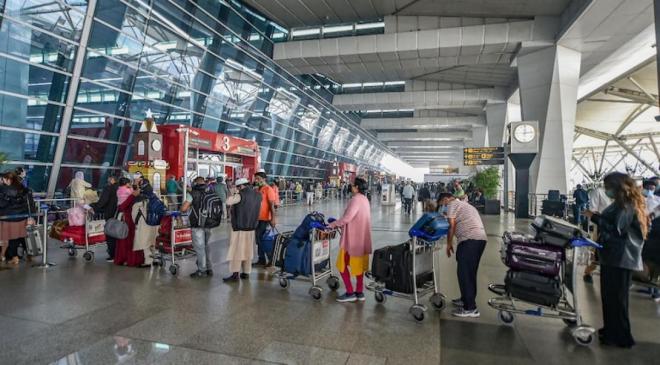Delhi’s Indira Gandhi International Airport started trials of automated full-body scanners at Terminal 2 this month. The machines — built by the American defence, aviation and information technology company Leidos — have been installed at the security check area of T-2.
The trials will continue for 45-60 days. “After successful completion of trials and evaluation of results, DIAL (Delhi International Airport Ltd, the GMR-led consortium that runs the airport) will install such scanners as per the directives of the BCAS (Bureau of Civil Aviation Security),” CEO of DIAL Videh Kumar Jaipuriar said.
Directive of the BCAS
In 2019, BCAS had asked for these scanners to be installed at 84 airports around the country within a year. The massive disruption caused by the Covid-19 pandemic, however, led to most airports missing the deadline.
Cost was also an issue. The Leidos machines being tested at T-2 currently cost between Rs 4 crore and 6 crore. The door frame metal detectors currently in use cost only between Rs 50,000 and Rs 80,000.
How the scanners work
The full-body scanners use millimetre wave technology to detect both metallic and non-metallic objects. Millimetre waves are electromagnetic waves at the higher end of the microwave band, lying in the extremely high frequency (EHF) range of 30-300 GHz.
Millimetre waves easily pass through common clothing materials and reflect off any concealed objects. An imaging system uses the reflected wavefronts to construct a three-dimensional image on a monitor, revealing the size, shape, and orientation of the concealed object.
According to DIAL, the scanners will be able to detect non-metal objects such as narcotics, plastic explosives, and prohibited or illegal objects made of substances like rubber that cannot be detected by metal detectors. The scanners will detect the size, shape, and location of objects concealed in body cavities or organs as well.
Experience of passengers
According to DIAL officials, the passenger will have to enter the glass-frame machine and raise their arms. In millimetre wave scanners, two antennae typically transmit waves simultaneously as the frame of the machine rotates around the passenger.
Any illegal object detected by the scan will be seen on a screen monitored by officials. If no threat is detected, the passenger will move on to the security hold area.
The machine can scan the body and produce results on the screen in less than six seconds, officials said. Each machine can process around 200-300 people per hour, they said.
“At present, passengers have to remove their jewellery, shoes, belt, phones, devices, and any other objects that can trigger the metal detector. In the case of the new millimetre wave scanners, they can walk into the machine without having to remove anything. Once the machines are in place, there will be no need for physical frisking or passengers having to take off items of clothing. The scanners will speed up security checks,” an officer said.
The metal detectors will be used for special category passengers such as wheelchair-bound persons, senior citizens, or people who can’t pass through the scanner.
Real-time trials are being conducted where feedback from passengers, security personnel, DIAL and BCAS is being recorded, officials said.
Safety of the scanners
The new body scanner will be a safer alternative for the passengers as it doesn’t use X-rays or ionizing radiation, officials said. BCAS has noted that millimetre-wave technology should be used in order to avoid harmful X-ray radiation.
As per Leidos, signals from the machine are 1,000 times less powerful than those from cell phones wireless handsets. It has been approved by the Transport Security Administration (TSA), and is deployed at airports across the United States.
Officials sought to allay concerns over the possible breach of privacy of passengers. It is a contactless procedure that does not produce an image of the person; it only highlights “threats” on a generic mannequin figure on its screen, they said.
In the case of X-ray machines, there were reports that a “clearer image” of the body was being generated, in violation of privacy concerns of passengers.
“Safety and security of civil aviation is a major concern for all. As an airport operator, DIAL has been constantly working to make the process smooth for the passengers without compromising security and safety. The CISF has been doing a tremendous job. Now, we have deployed one of the advanced full-body scanners at the airport. It takes care of passengers’ privacy during security checks and hardly has any impact on their health,” DIAL CEO Jaipuriar said.





































